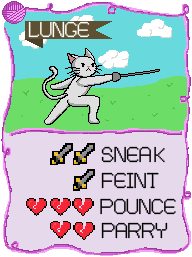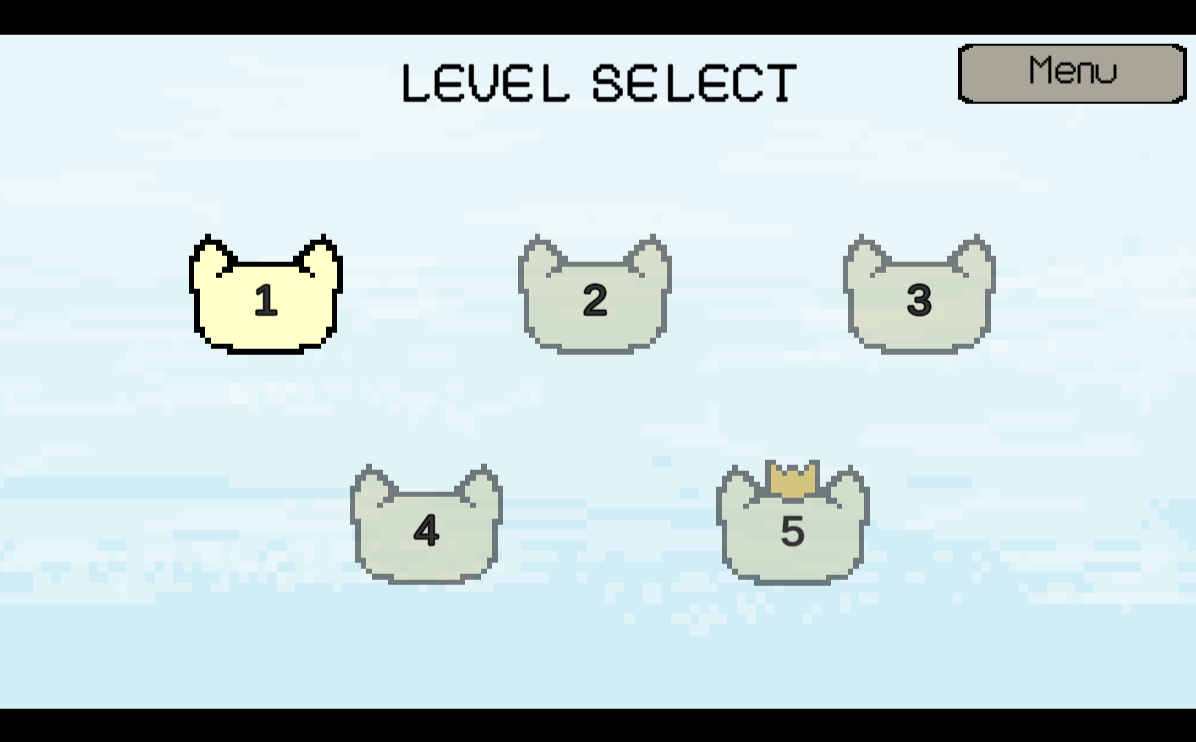Points and Purrs was a project created by "Table 6," my group in the Game Design 2 class at UW Madison. Our group was a team of 4 people, a programmer (myself), a game designer (Sage Fritz), an artist (Yue Shi Mo), and a project manager and sound designer (Brianna Love). This project was "completed" within a semester, however there are still things that we as a team hope to return to later in the future.

Points and Purrs is a turn based game that uses preconstructed decks of cards for strategic gameplay. The player must use the cards they are dealt to counter the opponent CPU's strategy and deal enough damage to win battles and ultimately finish the game. These mechanics are expressed through 5 different cards; Lunge, Pounce, Parry, Sneak, and Feint.





Each card has weaknesses and strengths against other cards, and as we continue to work on the game we hope to add in more cards that contribute to the strategic nature of the game. Further, a deckbuilding aspect was another facet we wanted to include, but due to the time constraint of the game design course, we were only able to accomplish the foundational gameplay.
My role, in more depth, was to make sure that the game was playable according to the game designer's vision, as well as managing the GitHub for the project (Sage handled the UI programming). The game was built in the Unity 2D engine and scripted with C#. While I had made very simple games before using Unity, this was one of the first times I had ever been required to "complete" a project.

The core of the game is centered around a finite state machine that I created to direct the flow of combat. The states are as such: Start, Prebattle, Player, Battle, Cleanup, Win, Lose, and Epilogue. Right as the battle starts, the game enters the "Start" state, where basic level setup occurs, then it moves to "Prebattle," where the character you're fighting against makes a quip or remark before battling. Then it switches to the "Player" state, where it remains locked until the player plays a card. Once the player plays a card, the enemy AI makes it's choice (more on that later) and the cards are compared. Based on the image above, certain cards have certain outcomes when they are played against each other. For example, Pounce deals 3 damage to Lunge. This all occurs in the "Battle" state. Once the cards have been played, the "Cleanup" state is entered, where the game checks for any state based actions like winning or losing the game. A "Win" state is entered from Cleanup when the enemy has 0 HP remaining. Likewise, the "Loss" state is entered if the player has 0 HP or if the player runs out of cards in their deck. The "Epilogue" state is only entered if the player wins, and similar to the "Prebattle," the enemy character will make some closing remark.




The AI in the game is very simple, as time limited a lot of what I could learn in that regard. Each enemy in the game has a set of pre-made patterns that are based off of the turn count. For example, the enemy Peanut will Lunge 3 times in a row and then parry on the 4th turn, then it will reset. I tried to work with Sage on making a reasonable balance of difficulty as you moved forward through the game, but in most cases things can be adjusted in later iterations.
Overall, I think what I learned the most from the semester was the beauty of iterative development and being able to work on a team. It felt pretty unreal how much progress game development could make while working with a team. I expect to update this page more after more development, and it will be noted on the main page if I do!


